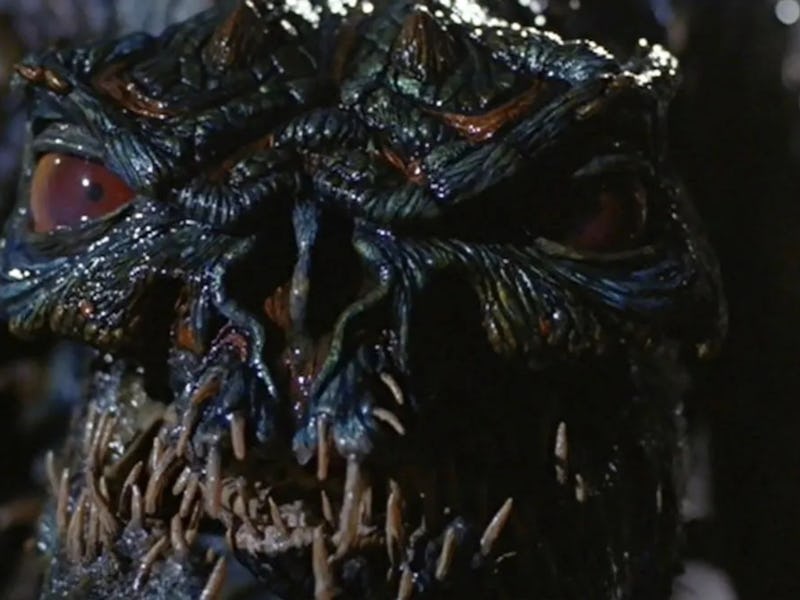David Cronenberg’s Most Infamous Movie Received a Surprisingly Smart Sequel
It was impossible to top The Fly, but Chris Walas gave it one hell of an attempt.

To David Cronenberg, the mutation of the flesh is often the gateway to altered self-identity and perception. His brilliant, emotionally devastating The Fly is a visceral examination of this core sentiment: both a grotesque creature feature and a tragic love story, The Fly uses its literal metamorphosis to highlight the violent extremes of the inevitable, irreversible nature of change. What makes The Fly unforgettable is Cronenberg’s innate understanding of what makes us tick, where fear manifests as body horror and exposes the latent anxieties for things that end, be it relationships or life cycles.
To make a follow-up to a film so infused with heartbreaking finality feels counterintuitive, which is perhaps the main reason why The Fly II has been all but forgotten. Directed by special effects master Chris Walas (who won an Academy Award for his work on The Fly), Fly II continues the “Brundlefly” legacy with the birth of Martin Brundle (Eric Stoltz), an event that makes for a shocking opening sequence meant to horrify and repulse.
In this opening, Veronica Quaife (Geena Davis in the original, Saffron Henderson here) dies after giving birth to a squirming larval sac, which splits open to reveal a healthy baby boy with a peculiar condition. Carrying the dormant insect genes of his father, Seth Brundle, Martin grows up under the scrutiny of Bartok Industries while suffering from Brundle’s Accelerated Growth Syndrome, a rare illness that rapidly propels his growth and maturity. A five-year-old Martin looks like he’s in his mid-20s, and his astonishing, genius-level intellect fast-forwards the gradual process of adulthood and emotional maturity within an incredibly short span.
Cronenberg’s film can be viewed through several lenses: Seth’s transformation could be an allegory for disease or the inescapable rot embedded within human relationships, leading to the erosion of identity as it’s overtaken by something more primal. While Seth dreams of becoming the world’s first insect-politician, Martin succeeds in fulfilling his father’s wishes without ever realizing it, as he’s able to balance his superhuman instincts with his natural empathy and compassion. The Fly II essentially inverts the themes of its predecessor while still honoring them, as the sequel rallies for a more hopeful, just resolution that feels impractical but cathartic.
The tragic overtones of The Fly revolve around Seth and Ronnie’s relationship, and how the former’s grotesque transformation distorts his perception and devolves his love into violent obsession. Like us, Martin is horrified to learn that his father wanted to morph himself, the woman he loved, and their unborn child into a singular, monstrous entity. In a deliberate inversion, Martin’s endearing relationship with scientist Beth Logan (Daphne Zuniga) remains tender and unconditional, even after Martin gradually morphs into an insectoid with a dwindling sense of humanity. While there are flashes of his father’s post-transformation hubris and rage, Martin chooses to punish only those who deserve it, including the cruel, dispassionate doctors who treated him as a lab rat since his birth.
A romance as old as time.
Any conversation about The Fly is incomplete without a mention of its creature effects and body horror elements, and Walas elevates the sequel’s somewhat predictable plot with his commendable artistry. The sudden burst of gore and face-melting terrors in the final act evoke a conscious schlocky effect, intended to be experienced as rightful comeuppance for the bad guys whose bodies are warped and twisted beyond recognition by the massive “Martinfly.” Notably, the film’s most repulsive body horror segments don’t stem from our protagonist’s hideous transformation, but that of an adorable golden retriever, whose fate is the catalyst for Martin’s insistence to cling to his humanity even in the face of uncontrollable change.
When treated purely as a sequel to a groundbreaking piece of thoughtfully gross cinema, The Fly II fails to impress, as it fails in its sincere attempt to deepen the original’s themes. However, when considered as a standalone spiritual successor to The Fly, Walas’ film boasts thoughtfully fleshed-out ideas about hope, identity, and personal legacy as self-engineered concepts rather than circumstantial eventualities. There’s much reason to root for Martin Brundle and his heartbreaking urge to remain vulnerably human. While he might never measure up to his father’s eccentric, complicated legacy, he succeeds in carving out a space for his own.
This article was originally published on